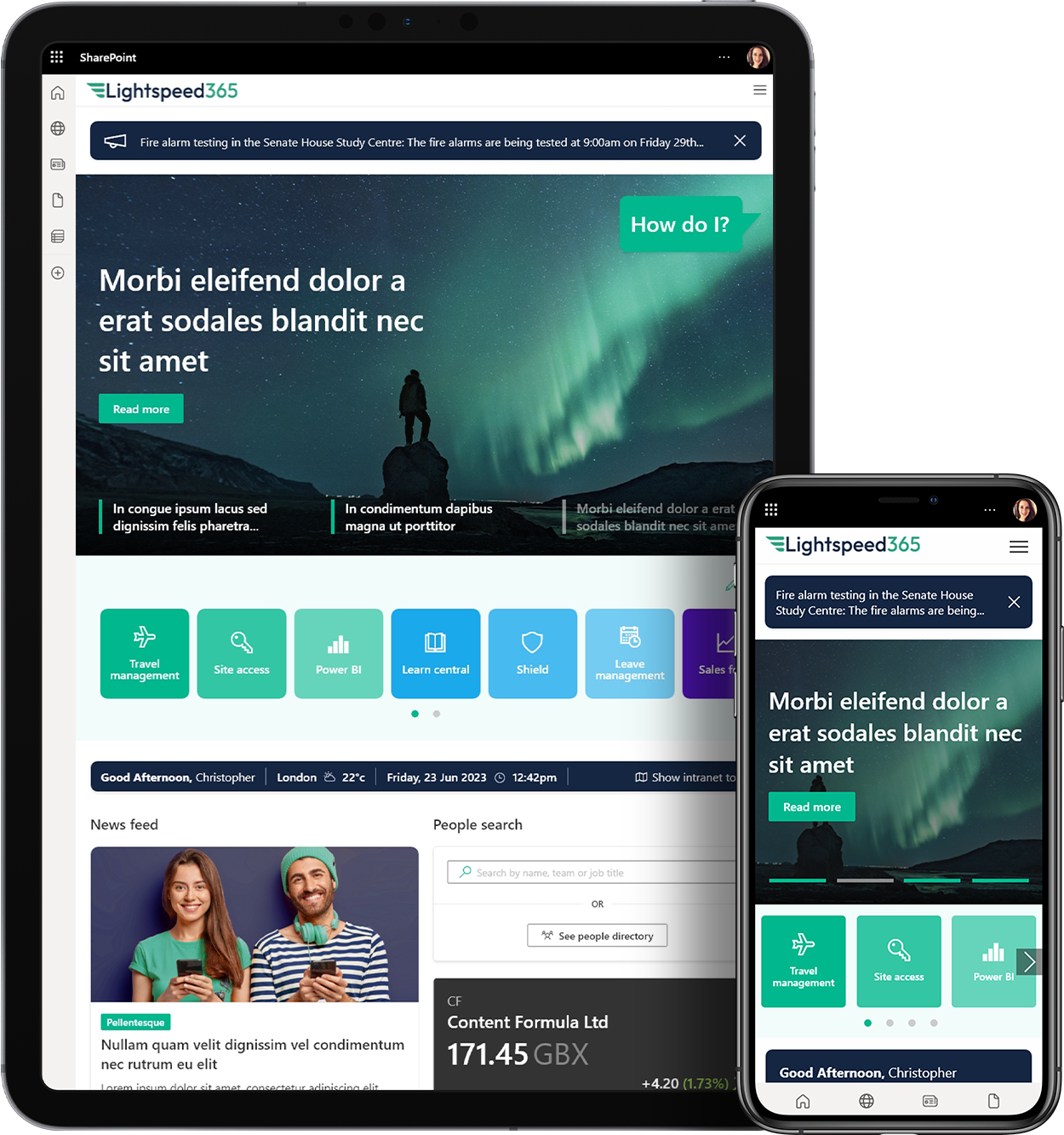A truly engaged workforce is a common goal of business leaders, Internal Communications functions and HR departments. The theory is that this brings a series of benefits for organisations including reduced turnover of employees, increased productivity and attracting new talent.
Employee engagement is a source of much debate particularly about its effective measurement, the level of organisational benefits that really do arise and the strict definition of the term. But stepping aside from some of the arguments about the topic, it is obvious that having an engaged workforce is a positive step. An individual wants to feel like they are working for an organisation they want to work for with an arrangement that suits their needs, and in turn organisations and their leaders want to have employees who are happy working for them.
Do intranets support employee engagement?
One of the rationales of intranets is that they do indeed support employee engagement. Of course, an intranet is just one of the channels and tools that support engagements, but what is surprising is the number of different ways that an intranet really can help. Were already covered how an intranet can contribute to a great employee experience, but what about the related area of employee engagement?
At this stage its worth noting that employee engagement reflects how employees feel. Ultimately, it is not something which any internal communications or HR function can control, although they can influence it. To a certain extent, engagement is an output or consequence of how organisations, management and other employees behave and work. The intranet therefore is one of those channels which can help influence engagement in a positive way.
A popular model of employee engagement is provided by Aon, a global professional services firm. Aon defines engagement as the psychological state and behavioural outcomes that lead to better performance. Aons engagement model lists six engagement drivers which illustrate the complicated mix of elements which contribute to engagement:
- Company practices (Communication, Diversity and inclusion etc.)
- The basics (Benefits, job security, work-life balance etc.)
- Brand (Reputation, Corporate responsibility etc.)
- Leadership (Both at a senior and business unit level)
- Performance (Rewards and recognition, career opportunities etc.)
- The Work (Collaboration, Empowerment / autonomy, Work tasks etc.)
Arguably, a good intranet makes a positive contribution across all six of these engagement drivers. Lets look at each in turn.
Company practices
Company practices refers to some of the fundamental ways companies operate covering elements such as communication, the enabling infrastructure and talent and staffing.
The intranet is a core communication channel within any organisation, but its also part of the enabling infrastructure, usually as the point of entry into the digital workplace or the place to search for critical information.
A poor intranet can be infuriating and frustrating a barrier for carrying out basic work practices such as being able to find the contact details of a colleague. A great intranet which allows smooth and open communication, helps encourage transparency and provides an easy gateway into different systems and applications, can really help an individuals day go far more smoothly.
The basics
Aon lists Work-life balance within the basics driver, along with factors such as pay and job security. Work-life balance is important for many of us. A modern intranet makes a positive contribution to this by supporting remote working – allowing employees to access critical information and content, collaborate with colleagues and complete tasks often, from any device.
For example, the intranet can help support an employee working from home when they need to, something which is very important for anybody with a young family, for example.
Brand
Employees should be proud of the organisation they work for. The company brand, its values and how a company behaves are important. reflected in activity such as Corporate Social Responsibility initiatives. Recently focus has also been on the concept of purpose why does an organisation exist and who does it serve and whether it gives back something to the wider community, rather than just focus on profit for shareholders.
The humble intranet is an excellent channel for reflecting and enhancing an organisations reputation and brand with employees. This is not just by providing information on purpose and values, but also by proving that the company and its employees are living by these. News about how employees are volunteering in the community or stories about individuals providing excellent customer service might not change the world, but collectively they can help support engagement and how an employee feels about their employer.
Leadership
The contribution of leadership to employee engagement is easy to see. Leadership, both at the organisational and at the divisional or departmental level, influences everything from operational processes to deeper organisational culture to how employees relate to company strategy and purpose.
Leadership communications to employees are very important and the intranet is one of the key communication channels. Leaders can use traditional news, video or blogging to get important messages across, as well as use social tools to interact with employees. When the intranet is used as a channel for dialogue between senior management and employees it is at its most powerful employees see management in a different light, while leaders get a real sense of how employees are feeling. The presence of that two-way conversation can contribute to employee engagement itself.
Performance
Aons performance driver covers elements such as Career opportunities, People management and Performance management. The two areas highlighted by Aon where intranets have most impact are Learning and development and Rewards and recognition.
Intranets can provide access to learning and training materials (for example, Wizdoms intranet has a very good course management feature) but they also help with social learning. The 70-20-10 model suggests that at least one fifth of learning comes from interactions with others, and intranet community sites and identification of experts helps with those interactions.
Intranets are also a good way to recognise employee achievements. Intranet people-related news might report inspiring examples of work carried out or celebrate employee milestones such as years of service reached. Peer to peer recognition where employees thank fellow colleagues for doing something exceptional with these shout outs listed on the intranet can be a powerful form of employee recognition.
The work
Aon list everyday work as another key driver for employee engagement, highlighting Collaboration, Empowerment / autonomy and Work tasks as critical. Intranets are designed to help employees carry out their work and by providing information and tools, intranets can help employees be more autonomous and less reliant on others to carry out their roles.
Probably the biggest contribution to employee engagement in this area is the intranets contribution to collaboration. An intranet can:
- provide the ability for an employee to ask a question across the whole company and get answers within hours
- locate a specialist or expert for their team
- house a discussion group for a community of professionals around a theme or specialism
- provide secure spaces for teams to collaborate and communicate
- in some cases, also act as an extranet to collaborate externally.
One of the most exciting elements of working in an organisation is being able to collaborate with colleagues, perhaps from the other side of the world, and intranets provide excellent support for this which can help develop close working partnerships and even friendships.
Intranets and employee engagement
Intranets influence employee engagement, but not just because of their role around delivering communications. They enable staff to work remotely, collaborate with colleagues, get recognition and more. All these factors can influence employee engagement.
Overall an intranets contribution to employee engagement is varied in some areas obvious and in other areas, subtler. If you want to engage your employees, then investing in a great intranet is an investment worth making.



 SharePoint Products
SharePoint Products

